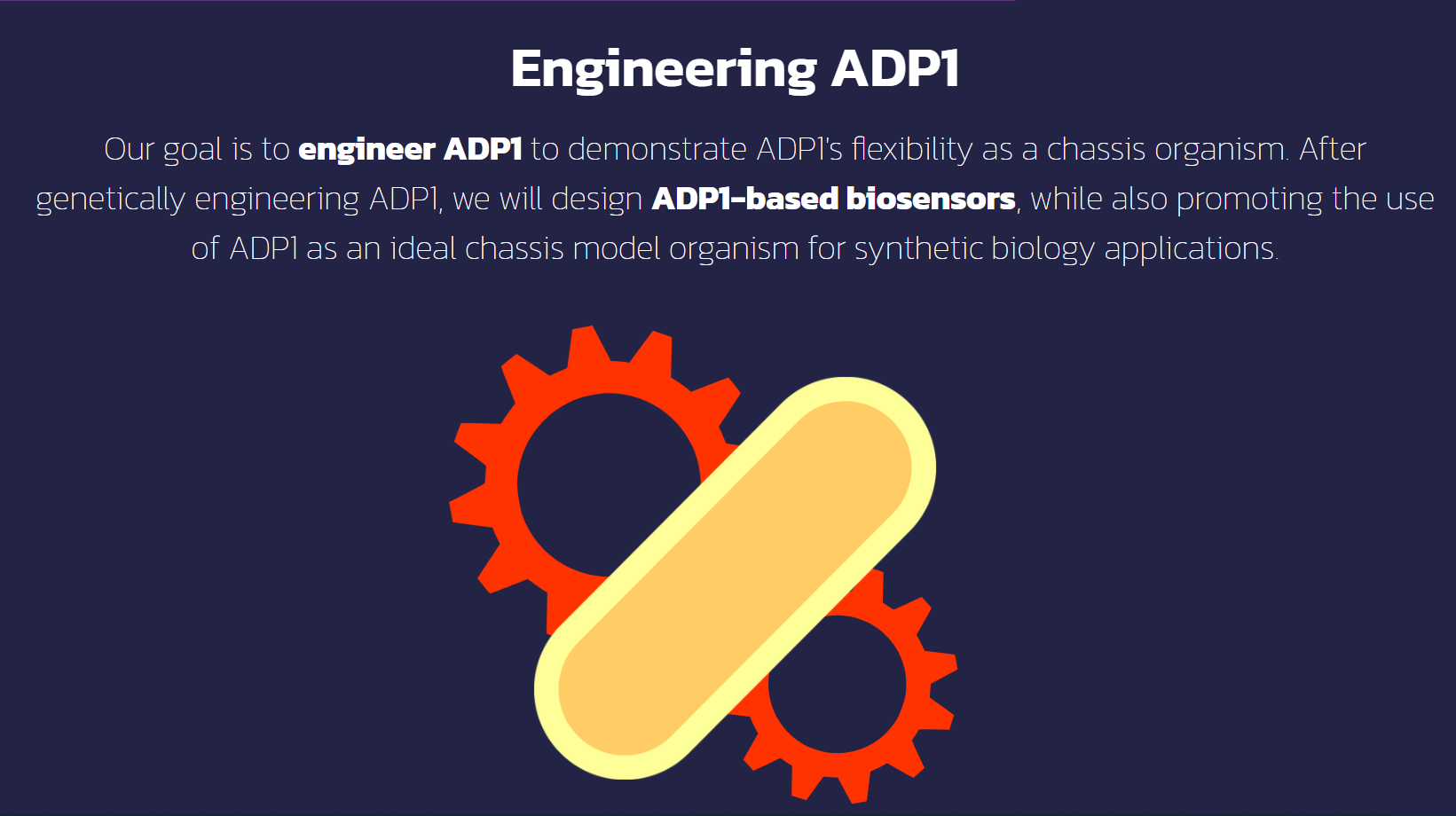Part:BBa_K4342000
tdk/kan Cassette
Introduction
The 2022 UT Austin iGEM Team’s Part Collection provides a number of DNA sequences and procedures for genetically engineering Acinetobacter baylyi ADP1. We were able to effectively engineer ADP1's genome using a two-step genetic engineering protocol. See the Engineering Page for more details on how we modified ADP1's genome. On this page, we explain how our part collection can be used alongside this two-step protocol to delete ADP1 genes, insert DNA sequences into any chromosomal location, and engineer an ADP1-based biosensor to detect any DNA sequence of interest.
We hope this part collection guides future iGEM teams in engineering ADP1 and utilizing ADP1’s flexibility to tackle any challenge in synthetic biology.
Categorization
For our parts collection, we categorize our parts into the following categories:
Upstream
An Upstream basic part is a DNA sequence directly upstream of a target gene. These basic parts are homology flanks that are used for ADP1 Genetic Engineering. Examples include the ACIAD2049 Upstream for P. destructans detector (BBa_4342003) and pbpG Upstream (BBa_4342011).
Downstream
A Downstream basic part is a DNA sequence directly downstream of a target gene. These basic parts are homology flanks that are used for ADP1 Genetic Engineering. Examples include ACIAD2049 Downstream for P. destructans detector (BBa_4342004) and pbpG Downstream (BBa_4342012).
Integration Cassettes
An "Integration" cassette is a composite part consisting of an "Upstream" basic part, the tdk/kan basic part (BBa_4342000), and a "Downstream" basic part. These parts are designed to use in the first transformation step in ADP1 Genetic Engineering. Examples include the ACIAD2049 Integration cassette (BBa_4342019) and the acrB Integration cassette (BBa_4342023).
Rescue Cassettes
"Rescue" cassette is a composite part consisting of an "Upstream" basic part, an optional genetic device, and a "Downstream" basic part. These parts are designed to use in the second transformation step in ADP1 Genetic Engineering. Examples include the ACIAD2049 Rescue cassette (BBa_4342020, Upstream + Downstream), the YFP Rescue cassette (BBa_4342030, Upstream + Genetic Device + Downstream), and the nptII Detector Rescue cassette (BBa_4342031, Upstream + Composite Part + Downstream).
Genetic Device
"Genetic Device" is a basic part that can be any DNA sequence to be integrated into ADP1. Examples include the CymR YFP (BBa_4342008) and the nptII Broken Gene (BBa_4342015).
We further categorize each part with a standardized Golden Gate Assembly (GGA) Type 1-8 Overhang [2]. Each type is ligated to a complementary type (ex. Type 2 can be ligated to Type 1 and Type 3). Moreover, some parts contain consecutive GGA Type numbers, such as Type 234. These DNA sequences start with a Type 2 Overhang and end with a Type 4 Overhang (ex. tdk/kan cassette (BBa_4342000).
Usage and Biology
The tdk/kan cassette is the keystone of our parts collection. It is a highly versatile sequence used for efficiently and effectively engineering the Acinetobacter baylyi ADP1 genome. This part contains the kanR and tdk genes, which allow for the selection and counterselection of genetically engineered ADP1 cells. When this cassette is integrated into the ADP1 genome, the kanR gene confers resistance to kanamycin and the tdk gene is lethal to the cell when Azidothymidine is present [1].
The 2022 UT Austin iGEM team used the tdk/kan cassette to successfully delete a number of genes, insert DNA sequences into the ADP1 chromosome, and engineer an ADP1-based biosensor for detecting antibiotic resistance and P. destructans. Our design process and two-step ADP1 genetic engineering protocol can be found on the Parts, Contribution, and Engineering pages of our Wiki.
Design
The tdk/kan cassette is a Type 234 part [2] featuring BsaI restriction sites on its 3' and 5' ends, allowing it to ligate to Upstream and Downstream parts in from our collection. The composite parts below utilized this part for genetic engineering:
Figures 1 and 2 demonstrate how our tdk/kan cassette can be used in our two-step ADP1 Genetic Engineering protocol.
Characterization
[1] Metzgar, D., Bacher, J. M., Pezo, V., Reader, J., Doring, V., Schimmel, P., Marliere, P., & de Crecy-Lagard, V. (2004). Acinetobacter sp.. ADP1: An ideal model organism for genetic analysis and Genome Engineering. Nucleic Acids Research, 32(19), 5780–5790. https://doi.org/10.1093/nar/gkh881.
| None |




